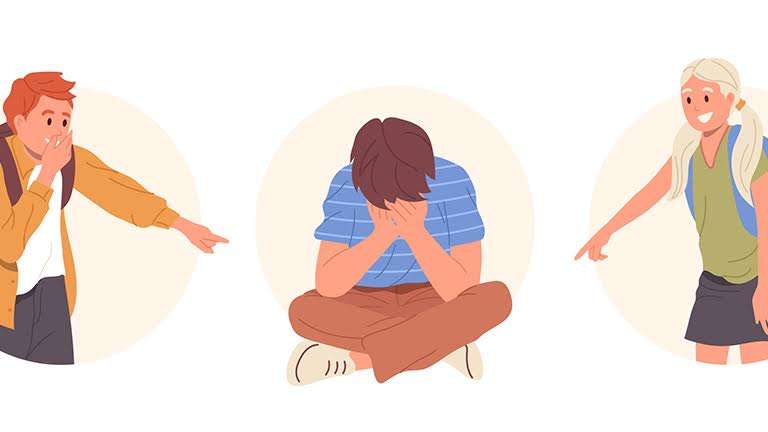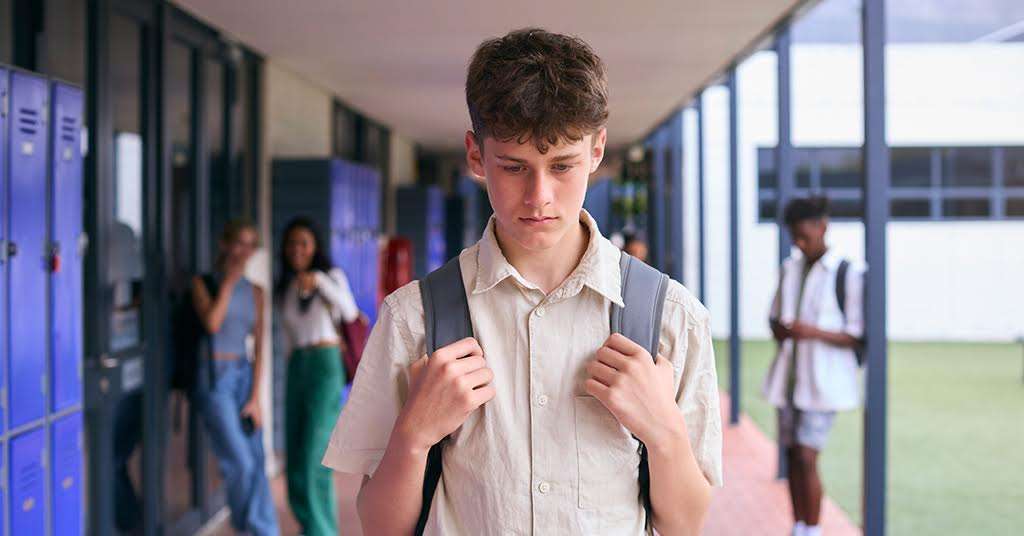
Bullying is a common problem in Hong Kong, as it is in many countries and regions across the world (Johansson et al., 2022). Bullying can have a big impact on a child. The experience of being bullied is associated with poorer concentration, lower school attendance, a weaker sense of belonging in school, and lower academic achievement. Bullying can also lead to mental health problems such as anxiety and depression, as well as physical problems such as insomnia and disordered eating (Armitage, 2021).
The effects of bullying can also reach far into the future. For example, people who were bullied as children have a higher chance of suffering from depression, anxiety, and suicidality many years into their adult life, Bullying can also have negative consequences for bullies, who are more likely to be involved in violence and drug abuse in adulthood (Klomek et al., 2015).
Since bullying is so common and has such serious consequences, it’s important to understand it, be able to spot it, and deal with it quickly and effectively.
Identifying bullying
We should be clear that not all aggressive behaviour is bullying. It can be helpful to think about children’s antisocial behaviour as falling along a spectrum, from rudeness at one end to bullying at the other. Rudeness is saying something thoughtlessly unkind or hurtful, something children (and adults!) often do. A bit further along the spectrum, kids can deliberately make unkind and hurtful comments. This might be in the context of an argument or the result of an escalating conflict between two or more kids, another very common scenario.
While we should not underestimate how hurtful an unkind comment can be, learning to respond to conflict and mean comments in an appropriate way is a part of growing up and learning to care for one’s mental health. Parents and teachers can use these situations to teach kids conflict resolution skills, empathy, perspective, and resilience.
Bullying is something different, however. The commonly accepted definition of bullying used in educational research is intentional and repeated aggressive behaviour towards and individual carried out by a single person or a group (Olweus, 1993). It occurs when aggressive behaviour is repeated with the intention of causing pain or distress, and when an imbalance of power exists between the perpetrator(s) and the victim. Bullying can be verbal, physical, sexual, and increasingly takes place online through social media.
Parents and teachers can spot possible cases of bullying by observing kids’ behaviour. Reluctance to go to school, changes in mood, eating habits or sleep patterns, unexplained cuts and bruises, and missing belongings, can all be signs of bullying impacting a child’s mental health. We would not want to immediately jump to conclusions – changes in mood and sleep patterns can be a normal part of adolescence, but they should alert us to the possibility that bullying is an issue.

Responding to bullying
As parents, the first key to dealing effectively with bullying is to help kids feel comfortable to talk. If adults can listen without judging, criticising, questioning, or even advising, kids can feel more heard, more understood, and will be more likely to open up. Creating a culture of listening within the family is, perhaps, the most important foundation for a good relationship with our kids and will make it easier for them to share their problems. Of course, this is not always easy to do!
Given the negative and sustained impact it can have, bullying needs to be dealt with quickly and effectively. Kids won’t be able to solve bullying problems on their own and will need parents and teachers to take steps to intervene. However, parents sometimes worry about approaching the school to report a bullying problem, fearing that the school might not take the problem seriously or even that the problem might get worse.
The Hong Kong Education Bureau is clear that local schools should have robust provisions in place to prevent and handle cases of bullying (Hong Kong Education Bureau, 2019). International/private schools will also have an anti-bullying policy. It’s a good idea for parents to read the school’s policies and understand the systems in place for dealing with cases of bulling.
Research shows the importance of school culture in effectively addressing bullying. Schools can provide preventative programmes that educate kids about bullying, encourage kids to speak up when they experience bullying, and provide training and resources to teachers to recognise and respond to bullying (Australia’s Safe and Supportive School Communities Working Group (2014). It has also been established that, when students have a sense of belonging to their school, bullying is less likely to occur (Allen et al., 2014).
School counsellors and homeroom teachers might be the first port of call for parents. They will generally have experience in handling bullying, can give advice, and help to resolve the problem in the most helpful and supportive way.
Of course, it’s important for parents to establish a good relationship with their kid’s teachers and other staff members such as school counsellors before problems arise. These relationships can make it easier to approach the school and get help in a timely way if needed. Beyond individual parents getting to know individual school staff members, there is a substantial amount of research on the positive impact of wider partnerships between schools and parents (Epstein et al., 2018). When principals, school counsellors, and parents work together, an anti-bullying culture can be strengthened (Kolbert et al., 2014).
As in so many other areas, communication between parents, children, and schools is key. It’s not easy to communicate well as kids become teenagers, especially given everyone’s hectic life in Hong Kong. However, a focus on effective communication within the family and with the school is an important foundation for dealing with bullying effectively.
Photo Credits:
First image: zuperia
Second image: monkeybusinessimages
References
Allen, K., Kern, M. L., Vella-Brodrick, D., Hattie, J., & Waters, L. (2018). What schools need to know about fostering school belonging: A meta-analysis. Educational psychology review, 30, 1-34. https://doi.org/10.1007/s10648-016-9389-8
Armitage, R. (2021). Bullying in children: impact on child health. BMJ paediatrics open, 5(1). http://doi.org/10.1136/bmjpo-2020-000939
Australia’s Safe and Supportive School Communities Working Group (2014). A review of literature (2010-2014) on student bullying.
Epstein, J. L., Sanders, M. G., Sheldon, S. B., Simon, B. S., Salinas, K. C., Jansorn, N. R., Van Voorhis, F. L., Martin, C. S., Thomas, B. G., Geenfeld, M., Huchins, D. J., & Williams, K. J. (2018). School, family, and community partnerships: Your handbook for action. Corwin Press.
Hong Kong Education Bureau. (2019) LC Paper No. CB(4)579/18-19(02). https://www.legco.gov.hk/yr18-19/english/panels/ed/papers/ed20190301cb4-579-2-e.pdf
Johansson, S., Myrberg, E., & Toropova, A. (2022). School bullying: Prevalence and variation in and between school systems in TIMSS 2015. Studies in Educational Evaluation, 74, 101178. https://doi.org/10.1016/j.stueduc.2022.101178
Klomek, A. B., Sourander, A., & Elonheimo, H. (2015). Bullying by peers in childhood and effects on psychopathology, suicidality, and criminality in adulthood. The Lancet Psychiatry, 2(10), 930-941. https://doi.org/10.1016/S2215-0366(15)00223-0
Kolbert, J. B., Schultz, D., & Crothers, L. M. (2014). Bullying Prevention and the Parent Involvement Model. Journal of School Counseling, 12(7). https://eric.ed.gov/?id=EJ1034733
Olweus, D. (1993). Understanding children’s worlds. Bullying at schools: What we know and what we can do. Blackwell Publishing.

Dr Mark Harrison
About the author
Dr Mark Harrison is an academic and counsellor with more than 20 years’ experience of working with schools and families in Hong Kong. His primary research interest is school counselling and wellbeing. Before becoming an academic, he was a schoolteacher and held several senior leadership posts in international schools.
Recently Added
Parental mental health plays a monumental role in a child’s social, emotional, behavioural and psychological development. Parents and caregivers are central to …
Cognitive behavioral therapy (CBT) was initially developed by Aaron Beck in the 1960s and it is based on the cognitive model of …
Artificial Intelligence or AI, as we like to call it, has become a part of everyday operations, enhancing everything from manufacturing automation …




